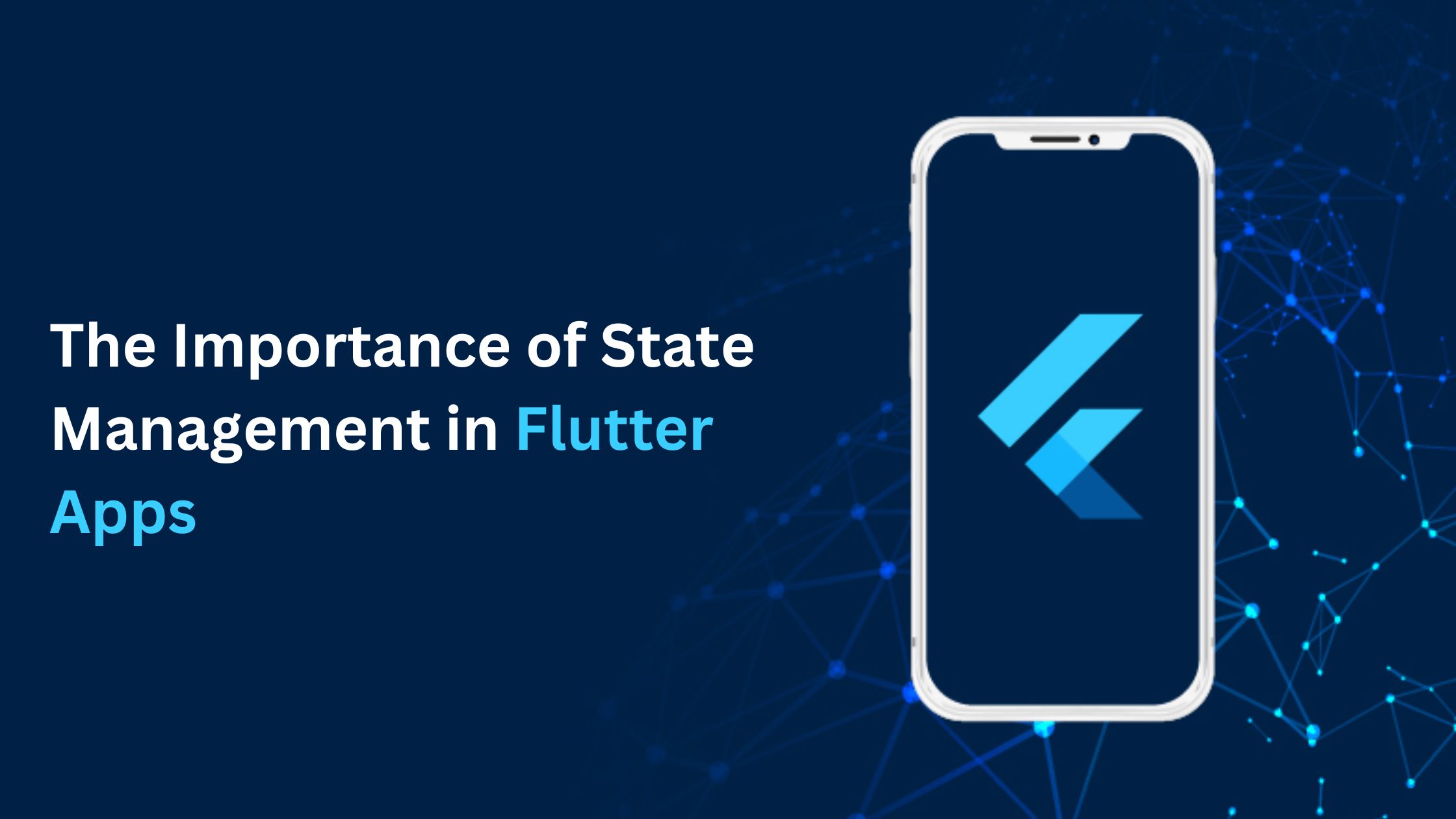When we talk about cross-platform app development, Flutter serves as a game-changing framework powered by Google. But to ensure its optimal performance a Flutter app development company utilizes state management to ensure the data is properly stored and retrievable to define the functionality of the app. But to understand its importance in a Flutter app, this blog will discuss key advantages and use cases.
Understanding State Management
State management orchestrates how data is stored, retrieved, and displayed in an application. In a Flutter app, state refers to the data that an app needs to render the user interface and respond to user interactions. Proper state management ensures that this data is handled efficiently, making your app responsive, maintainable, and scalable.
Why State Management is Important in Flutter?
Let’s understand why state management is essential to ensure the optimal functionality of a Flutter app.
Responsiveness
One of the primary reasons for emphasizing state management in Flutter is to achieve responsiveness in your application. When the user interacts with an app, such as by tapping a button or scrolling a list, the app’s UI needs to update in real-time. Efficient state management ensures that the app can react quickly to these interactions, providing a seamless user experience. Without proper state management, your app might become slow and unresponsive, leading to a frustrating user experience.
Code Maintainability
As your Flutter app grows in complexity, managing the application’s state becomes more challenging. Proper state management helps Flutter app development company in keeping the codebase clean and maintainable. It allows you to structure your code in a way that’s easier to understand, debug, and extend. In the absence of organized state management, your codebase can quickly become cluttered with unnecessary dependencies and difficult-to-trace issues, making it harder to maintain and develop.
Scalability
Successful mobile apps are often subject to rapid growth and expansion. To accommodate these changes, you need a scalable architecture that can adapt to new features, screen sizes, and data sources. Efficient state management helps in creating a scalable foundation for your app. It allows you to add new features and functionalities without introducing breaking changes or performance bottlenecks.
Top State Management Solutions for Flutter App Development
Flutter offers several state management techniques and packages to choose from, each with its own advantages and use cases. Here are some of the most popular ones:
Provider
Provider is a simple and user-friendly state management solution in Flutter. It’s a part of the Flutter ecosystem and doesn’t rely on external dependencies. Provider offers the developers offering Flutter app development services a way to efficiently manage and share state across your app using widgets. It’s a great choice for small to medium-sized apps and can be easily extended to work with complex scenarios.
Riverpod
Riverpod is an improvement over the Provider package, emphasizing more on type safety and dependency management. It makes use of the Provider package’s concepts while adding a layer of robustness and scalability. Riverpod is a suitable choice when working on medium to large-sized apps or when you want to ensure type safety and maintainability.
Bloc Pattern
The Business Logic Component (Bloc) pattern is another popular state management solution for Flutter apps. It is based on the concept of separating the presentation logic from the UI components. Bloc uses the flutter_bloc package to handle state management and is particularly well-suited for applications that require complex business logic.
GetX
GetX is a state management package that combines state management, dependency injection, and routing. It’s known for its simplicity and performance. GetX is a great choice if you want to create high-performance applications quickly and efficiently. The trusted Flutter app development company will use this solution to incorporate the best of three functionalities–state management, dependency injection, and routing in your app.
Redux
Redux is a predictable state container for Flutter that is inspired by the Redux library in JavaScript. It enforces a unidirectional data flow and is suitable for apps that require strict data handling rules and an immutable state.
Note- Choosing the right state management technique depends on your project’s requirements and complexity. It’s essential to evaluate the needs of your app and your familiarity with these techniques before making a decision.
Conclusion
State management is a fundamental aspect of building high-quality Flutter apps. It plays a crucial role in making your app responsive, maintainable, and scalable. But it’s also important to choose the right solution for your app based on your specific requirements. Consider the solutions mentioned above and hire a company that offers end-to-end Flutter app development services. They will incorporate best practices and techniques to make your app fully functional and capable of facing uncertain challenges.


